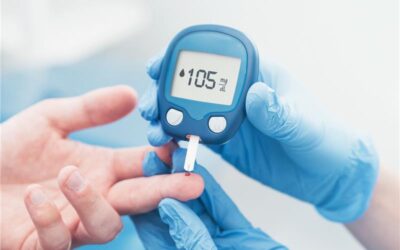Case Study
Biomarkers of Glucose Transporter Type 1 Deficiency Syndrome (GLUT1-DS)
The data shows that metabolomics may offer new insights into the molecular mechanisms regulating GLUT1 function and may open new avenues of treatment for GLUT1-DS.
The present study advanced the understanding of metabolic perturbations in the CSF, plasma, and urine samples of GLUT1-DS patients and GLUT1-DS patients on KD. The data showed that metabolomics may offer new insights into the molecular mechanisms regulating GLUT1 function and may open new avenues of treatment for GLUT1-DS.
The present study advanced the understanding of metabolic perturbations in the CSF, plasma, and urine samples of GLUT1-DS patients and GLUT1-DS patients on KD. The data showed that metabolomics may offer new insights into the molecular mechanisms regulating GLUT1 function and may open new avenues of treatment for GLUT1-DS.

The Challenge: Find Novel Targets for Identifying and Rare Disease GLUT1-DS
Glucose transporter type 1 deficiency syndrome (GLUT1-DS) is an inborn error of metabolism (IEM) that leads to reduced function of GLUT1. GLUT1-DS has an estimated frequency of approximately 1 in 83,000. The role of GLUT1 is to transport glucose across the blood-brain barrier (BBB); therefore, in GLUT1-DS, neurons are primarily affected by the lack of glucose. GLUT1-DS has a heterogenous clinical presentation comprising intellectual disability, movement disorders, acquired microcephaly, and seizures. Deficiency of GLUT1 results in hypoglycorrhachia, which is an abnormally low glucose concentration within the cerebrospinal fluid (CSF). Consequently, in clinical practice, the diagnostic biomarker for GLUT1-DS is a low glucose concentration in CSF. GLUT1-DS is a treatable neurological disorder; however, it is not routinely tested by newborn screening (NBS). GLUT1-DS treatment is based on a ketogenic diet (KD). Although KD is the first treatment choice for GLUT1-DS, this diet can lose its effectiveness over time in about 20% of patients. Thus, individualized therapies targeting the underlying pathophysiology of each GLUT1-DS case should be a primary goal in treating these patients. Further studies on the molecular mechanisms of KD are needed to develop novel therapeutic strategies.
Metabolon Insight: Unraveling Metabolic Mechanisms Related to Rare Disease GLUT1-DS
This study utilized two untargeted metabolomics technologies to profile plasma, urine, and CSF samples from GLUT1-DS patients on a normal diet and on a KD.1 The goal was to unravel metabolic mechanisms and biomarkers implicated in GLUT1-DS.
The Solution: GLUT1-DS Impairs Brain Metabolism
The metabolomics approach of GLUT1-DS patients not on KD was applied to obtain a more comprehensive overview of glucose-dependent pathways in the brain. Metabolomics identified over 300 metabolites in the CSF of patients with GLUT1-DS and biomarkers associated with GLUT1-DS. Comparing the metabolic profiles of two GLUT1-DS patients to a control group showed significantly lower glycerol 3-phosphate (Gro3P) levels and higher isocitrate levels.
Metabolomic analyses of plasma from six GLUT1-DS patients on KD identified over 600 metabolites. The z-scores for 3-hydroxybutyrate, 3-methyladipate, and N-acetylglycine were elevated in the plasma and urine samples of GLUT1-DS patients on KD, highlighting their potential as biomarkers of GLUT1-DS on KD. Analyzing signaling pathways to interrogate perturbations in GLUT1-DS patients on KD demonstrated that the most affected pathway was lipid metabolism. For instance, long-chain fatty acid, phospholipid, acylcarnitine, and sphingolipid metabolism were significantly impaired in GLUT1-DS patients on KD. Analysis of the metabolomic data also demonstrated the presence of free carnitine, suggesting its consumption in GLUT1-DS patients on KD.
The Benefit: Discovering Biomarkers and Elucidating Pathogenic Mechanisms of IEM
The present study advanced the understanding of metabolic perturbations in the CSF, plasma, and urine samples of GLUT1-DS patients and GLUT1-DS patients on KD. The potential biomarkers and metabolic insights discovered in this study deserve further investigation. The data shows that metabolomics may offer new insights into the molecular mechanisms regulating GLUT1 function and may open new avenues of treatment for GLUT1-DS.
This study demonstrated that Metabolon’s technology offers novel opportunities for discovering biomarkers and elucidating pathogenic mechanisms that might lead to the diagnosis and development of novel therapies for IEM.
References
1. Cappuccio G, Pinelli M, Alagia M, et al. Biochemical phenotyping unravels novel metabolic abnormalities and potential biomarkers associated with treatment of GLUT1 deficiency with ketogenic diet. PLoS One. 2017;12(9):e0184022. doi:10.1371/journal.pone.0184022






